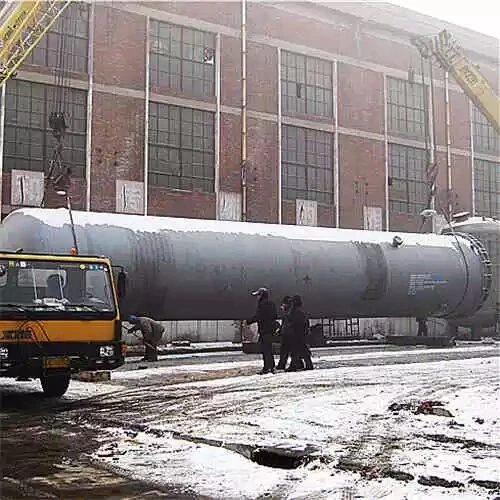Material Selections for Cryogenic Pressure Vessel Design (Part One)

The intricate process of designing cryogenic pressure vessels revolves around the meticulous selection of materials, leading to a set of corresponding constraints in the realms of manufacturing and construction. Specifically, the steel designated for the pressure components of cryogenic pressure vessels must meet the criterion of being killed steel. The evaluation of material performance involves considering the allowable stress at normal temperatures, specifically at 20 °C, and adhering to the strength calculation methodology outlined in the GB 150.3 Standard.
Delving into history, we find ourselves at the close of the 19th century, marked by a series of incidents involving low-temperature brittle fractures affecting rails, bridges, and structural elements in cold regions. The scientific and technological landscape of the time imposed limitations on advancing research into these issues. Fast-forward to the 1940s, and a plethora of vessels such as ships, pressure vessels, pipelines, chemical equipment, and sizable structures, especially those featuring welded components, experienced recurrent episodes of low-stress brittle fractures, resulting in substantial losses. Consequently, the industry turned its attention to the phenomenon of low-temperature and low-stress brittle fractures, recognizing their paramount significance.
A comprehensive analysis of numerous accidents attributed to low-stress brittle fractures reveals distinctive characteristics:
- Fractures tend to occur at relatively low working pressures, with the nominal stress being lower than the yield strength of the material, and with little to no local plastic deformation preceding the fracture.
- The rate of crack propagation is notably high.
- Low-stress brittle fractures predominantly manifest as cleavage or quasi-cleavage fractures, displaying grain-like features that are bright and smooth.
- These fractures often afflict pressure vessels with notches or pre-existing cracks, and various process defects and impurities within the cylinder itself act as sources for crack initiation.
- Typically, fractures transpire at low temperatures, where the inherent toughness of the material is compromised.
A closer examination of the aforementioned characteristics, coupled with insights from fracture mechanics, unveils a crucial correlation. The low-temperature toughness of the metal, specifically its micro-plastic deformation capability at the tip of a notch, emerges as the determining factor in a pressure vessel's ability to withstand brittle fractures occurring under low stress.
Factors for Low-temperature Toughness
1. Crystal structure: Ferritic steel with a body-centered cubic matrix structure has a higher brittle transition temperature and fracture tendency. Face-centered cubic metals like copper, aluminum, nickel, and austenitic steels generally do not undergo low-stress brittle fracture unless there are specific conditions like stress corrosion cracking. The stability of face-centered cubic metals is attributed to their unchanged yield strength at lower temperatures, reducing the likelihood of brittle fracture. In contrast, body-centered cubic metals experience increased yield strength in lower temperatures, making them more susceptible to low-stress brittle fractures.

